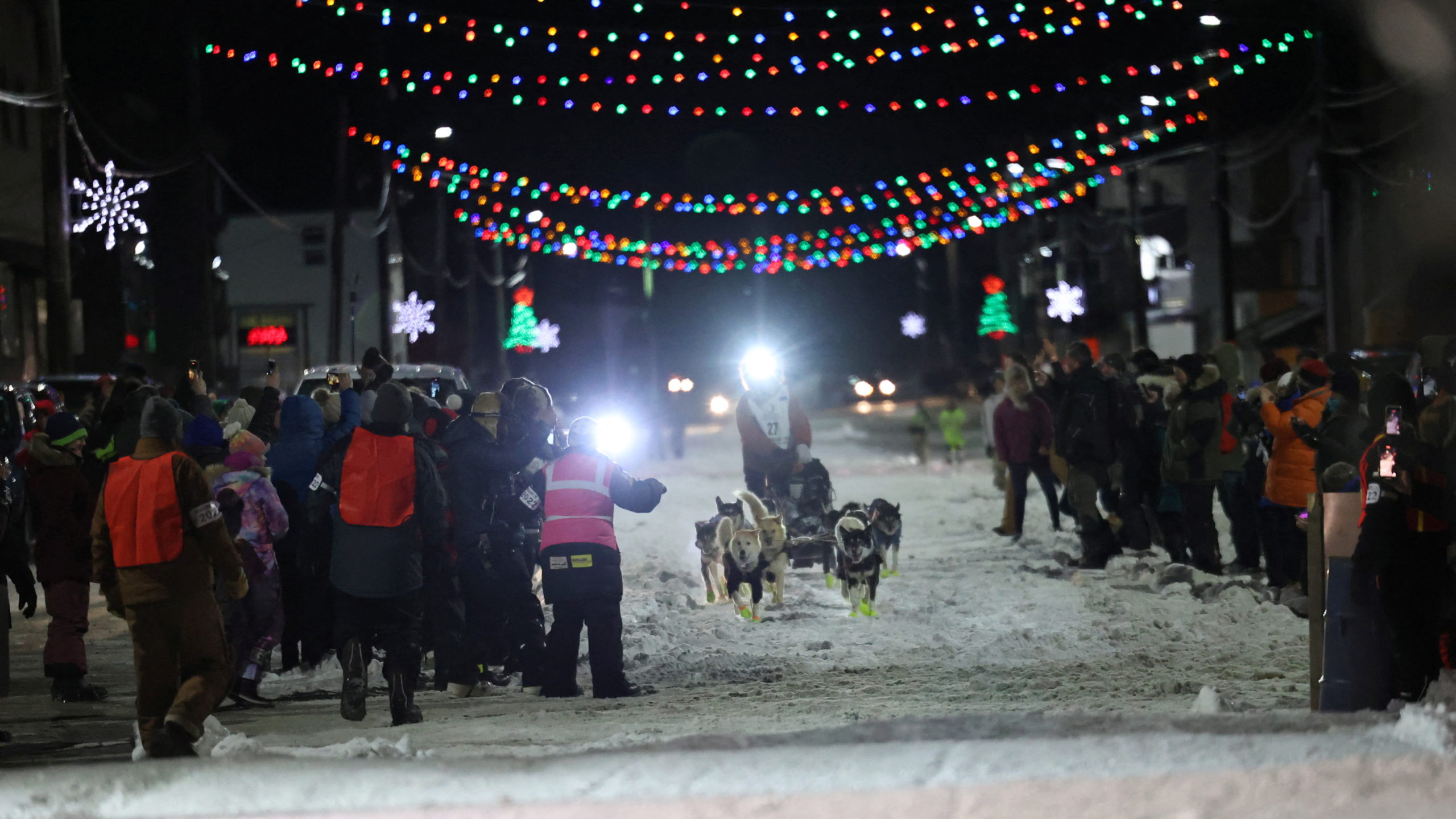Nordic skier-turned-musher wins 50th running of Alaska’s Iditarod race
It was Brent Sass's first win, after several years of competing.

ANCHORAGE — Brent Sass, a 42-year-old former college Nordic skier, glided into Nome early on Tuesday morning to win Alaska’s Iditarod Trail Sled Dog Race in the 50th year that the grueling, 1,000-mile (1,610-kilometer) test of endurance has been run.
A cheering crowd greeted Sass and his 11-dog team as they reached the finish line on Nome’s Front Street at 5:38 a.m. His elapsed time of eight days, 14 hours and 38:43 minutes was one of the fastest times in the Iditarod’s half-century history.
It was the first Iditarod victory for Sass, who moved to Alaska 24 years ago and has been living in Eureka, a small settlement outside Fairbanks.
“It’s awesome. It’s a dream come true,” Sass said, choking back tears. “Every one of these dogs I’ve raised since puppies, and we’ve been working towards this goal the whole time, and we’re here. It’s crazy.”
Until now, his third-place finish in last year’s COVID-19-altered race was his best Iditarod result. Even so, as three-time winner of the Yukon Quest International, a different 1,000-mile sled dog race, Sass was considered a top contender from the start of this year’s Iditarod.
His victory seemed assured for days. He held a steady lead from the race’s halfway point at Cripple, an abandoned mining settlement that he reached last Wednesday. In the final stretch, he was consistently more than two hours ahead of his nearest rival, five-time champion Dallas Seavey. Seavey managed to make up some time in the last miles to Nome and finished a little more than an hour after Sass.
For his victory in the world’s most famous sled-dog race, Sass will take a share of the Iditarod’s total $500,000 prize purse. The exact amount of his prize is yet to be determined, but winners in the past 10 years have usually taken home at least $50,000, according to Iditarod records.
Sass grew up in Minnesota and moved to Alaska in 1998 to attend the University of Alaska Fairbanks, where he joined the cross-country ski team.
His time on the local Nordic trails exposed him to dog mushing, and he learned the sport from Susan Butcher, the legendary four-time Iditarod champion, and her husband, David Monson.
This year’s event marked a return to normalcy, for the most part. A year after Iditarod contestants raced on a shortened out-and-back 860-mile (1,384-kilometer) course that deviated from the usual route through Native villages, the mushers were back on the traditional trail.
Forty-nine teams ran a ceremonial 11-mile (18-kilometer) run through Anchorage, Alaska’s largest city, on March 5, with the competition starting the next day from Willow Lake, roughly 75 miles (120 kilometers) north of Anchorage.
This year’s race featured a few COVID-related alterations. All participants had to be vaccinated and submit to regular testing, with checkpoints relocated slightly to minimize risks of disease spreading into remote villages, where medical services are limited.
One last-minute change forced by the pandemic was a high-profile substitution. Leading contender Nic Petit, a French-born musher, tested positive for COVID-19 days before the start. Four-time champion Jeff King, who had planned to sit out this year’s race, stepped in to drive Petit’s dog team.
The Iditarod has changed drastically since founder Joe Redington mortgaged his house to stage the first race in 1973. That year, the winner reached Nome in 20 days, and the event was likened to a 1,000-mile camping trip.
Now top Iditarod mushers are professionals with corporate sponsors though some companies have been pressured in recent years to drop their support by animal rights groups that condemn the marathon as cruel to the dogs.
The teams also travel with much greater speed through the Alaska wilderness. The Iditarod speed record is eight days, three hours and 40:13 minutes, set by Mitch Seavey in 2013.



